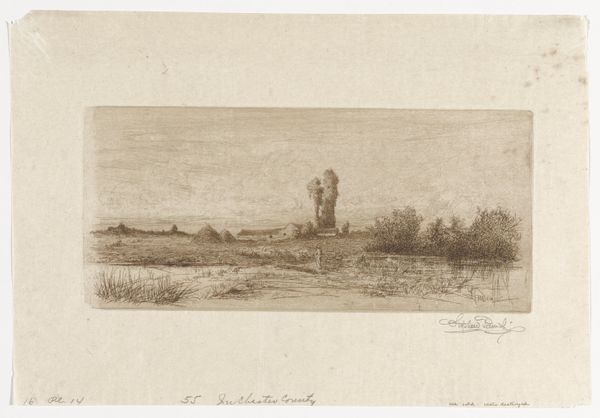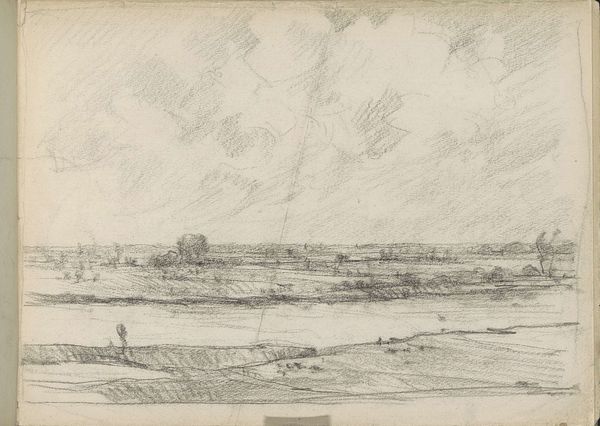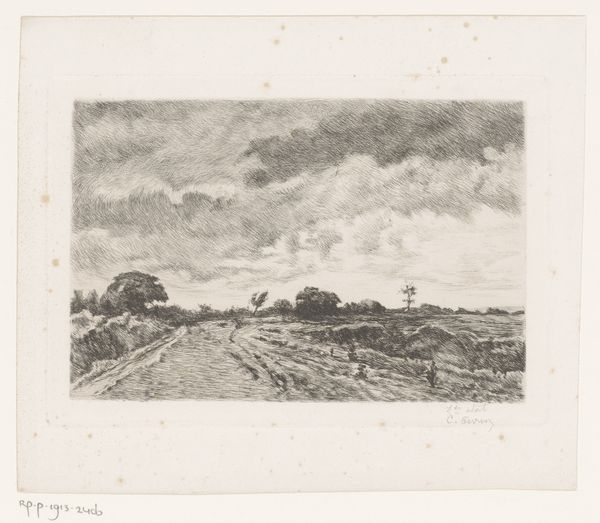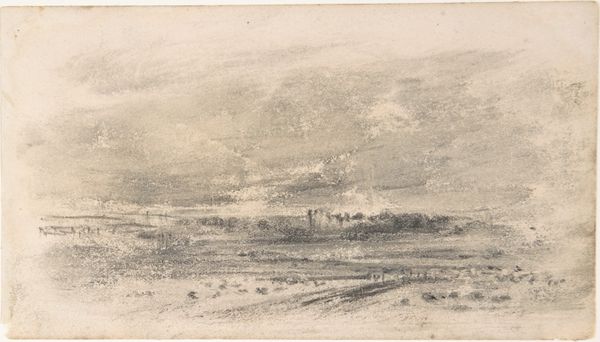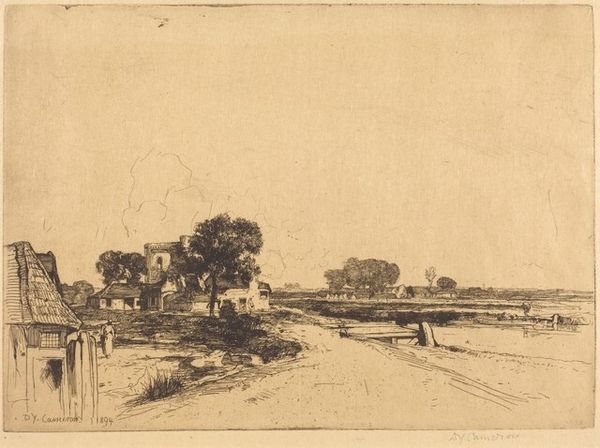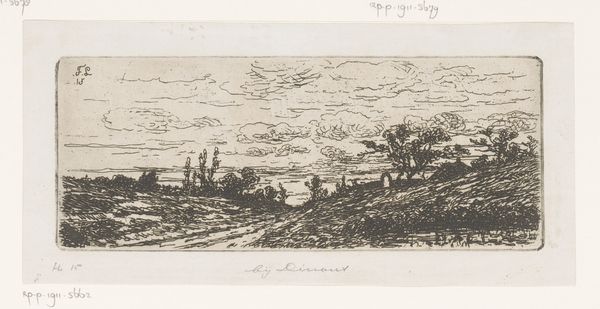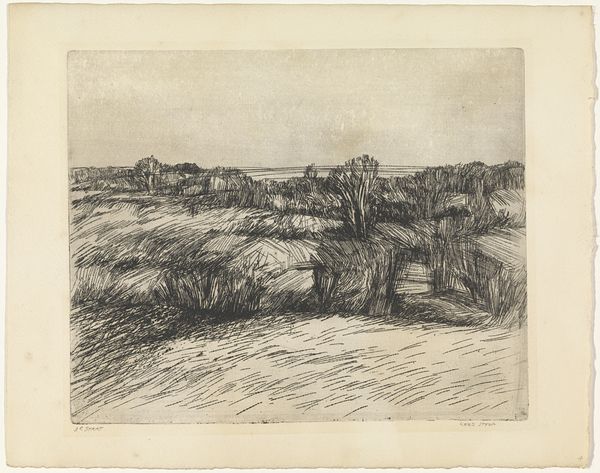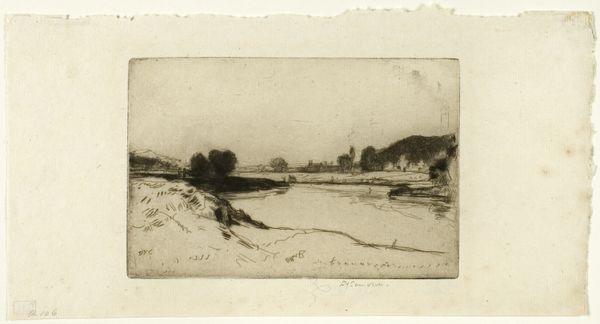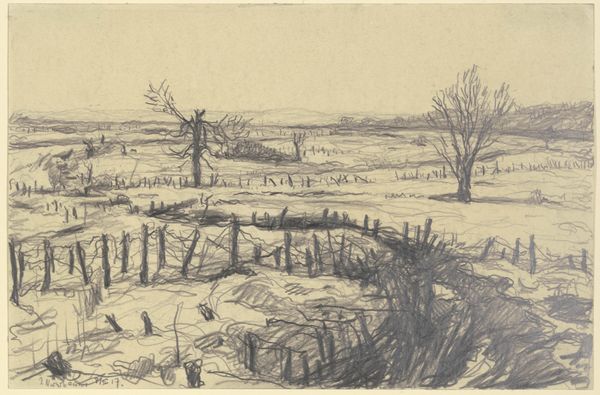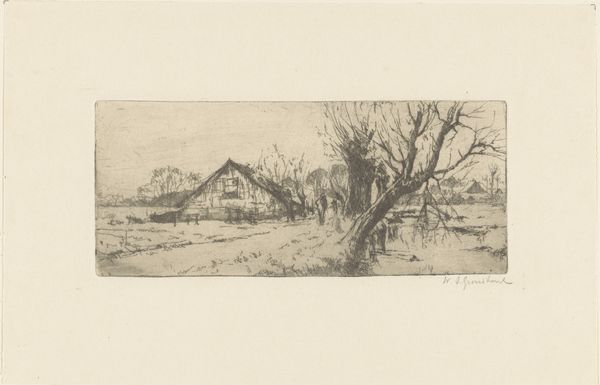
drawing, print, etching
#
drawing
# print
#
pen sketch
#
etching
#
landscape
#
etching
#
line
#
realism
Dimensions: height 86 mm, width 148 mm, height 115 mm, width 177 mm
Copyright: Rijks Museum: Open Domain
Curator: This is Pieter Willem van Baarsel's etching, "Weg van Leerdam," likely created around 1919. It's part of the Rijksmuseum's collection, showcasing a slice of Dutch landscape. Editor: Hmm, my first impression is one of stark loneliness. That tall utility pole right in the center looks like a solitary figure, almost oppressive in its verticality. The soft etching doesn't soften the mood; if anything, it makes the loneliness seep into everything. Curator: That vertical emphasis is intriguing. Traditionally, those kind of architectural features might point to concepts of modernity marching roughshod over the rural way of life. Do you feel that in it, that sense of imposition? Editor: I do, yes. And while landscape art often evokes harmony or peaceful contemplation, there's a distinct lack of romanticizing here. It's not overtly critical either, just…a quiet acknowledgement, perhaps, of the changing times. I’m feeling industrial anxiety mixed with pastoral indifference. Curator: Considering the historical context – 1919, right after the Great War, this sort of melancholy seems even more loaded. The image contains many references to Dutch vernacular: a small bridge or "tille" leads us to a village scene dominated by a church tower; and telegraph poles symbolize perhaps the speed of modern communication, its emotional as well as technological distancing, too. Editor: Exactly. The telegraph poles sever that line. They seem like an obstacle between the foreground road and village in the distance rather than connecting elements of modern life and cultural stability. It's a surprisingly unsettling piece for what looks like a simple landscape. Curator: Indeed, by using a very specific set of references in composition, it brings forward cultural continuity as much as individual and social displacement. Editor: This picture feels relevant in some other way, too; I think in our era we've gotten more acquainted with that stark landscape quality, in our modern isolation... Curator: Agreed. Its persistent hold on our contemporary consciousness is fascinating and rather unnerving, too.
Comments
No comments
Be the first to comment and join the conversation on the ultimate creative platform.
